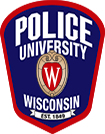“Members of communities are key partners in creating public safety, so communities and police need mechanisms to engage with each other in consistent and meaningful ways.”
– President’s Task Force on 21st Century Policing
During the process that led to my selection as UWPD Chief of Police, I was asked to publicly present my vision of a successful campus police department and to outline the strategies I would employ to advance this vision. Central to the vision I shared, is the understanding that trust is cultivated through consistency, consideration, and care. To this end, I am committed to community engagement and collaborative approaches to ensuring safety. And as I stated during my presentation and in numerous and varied forums since I began, I believe an essential strategy to further this particular vision is to establish a formal community advisory committee.
In these first few months as chief, through conversations both within the department and with several campus partners/stakeholders, I have developed a process framework to move this effort forward. It consists of three phases: information gathering, planning, and implementation. While I am fully committed to creating a community advisory committee, I understand that a thoughtful and collaborative approach will best ensure its effectiveness and sustainability — and as such will take time.
Currently, in this first phase, I am researching existing models for campus community advisory committees, meeting with various campus partners to gather information and insight, and working with these same partners to identify individuals representing a cross-section of campus and larger community stakeholders to participate in the planning phase. Next, during the planning phase, the identified stakeholders will provide input for the development of advisory committee expectations, goals, objectives, membership, and other operational details. Finally, the implementation phase will put in place community advisory committee members and establish mechanisms for ongoing assessment and communication regarding committee activity. It is my hope that by late fall, our first community advisory committee to the UWPD will officially convene.
Given that this endeavor is a work in progress, and I can’t foresee all possible bumps in the road ahead or predict the ways in which collaborative input will shape the process, the framework I’ve proposed here is certainly subject to change. As process adjustments are necessarily made, I will provide updates — so stay tuned for progress reports in the coming months. I am excited about the opportunity to work together toward what I believe is not my vision alone, but a shared vision. One that seeks to cultivate trust, foster improved police-community relationships, and to further promote campus safety through meaningful engagement and community input.
